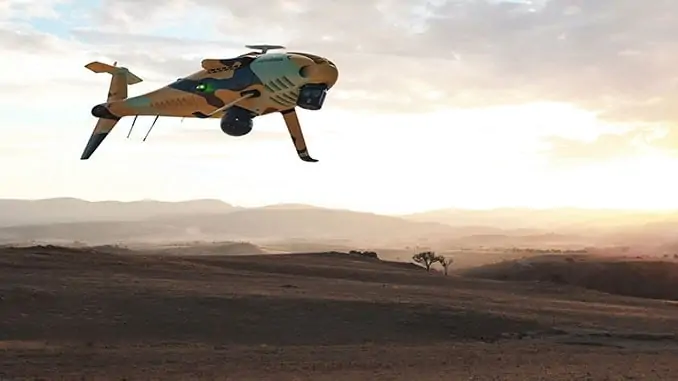Schiebel Pacific has begun expanding its business following increased demand for the company’s CAMCOPTER S-100 Vertical Take Off and Landing (VTOL) UAS (unmanned aerial system), hiring remote pilots and maintenance technicians as well as upgrading its facility.
The expansion comes after Schiebel Pacific partnered with Raytheon Australia to deliver a solution for the LAND129 Phase 3 Tactical Unmanned Air System (TUAS) project for the Australian Army. The company is hoping to win the contract for this project, after which the S-100 UAS will be produced by Schiebel Pacific at the new Australian production facility. Schiebel Pacific is also preparing for the upcoming SEA129 Phase 5 for the Royal Australian Navy (RAN).
The company is currently hiring remote pilots and maintenance technicians to better serve existing and future customers’ needs, with the particular goal of establishing an in-country sovereign Australian training capability that can deliver tailored training solutions for the Australian Defence Force’s (ADF) requirements both on land and at sea. Schiebel is currently under contract with the RAN, which operates several systems at 822X Squadron, Nowra, New South Wales.
Andrew Watson, General Manager at Schiebel Pacific, commented: “We are growing our footprint in Australia as we’re confident that the demand for our CAMCOPTER S-100 will continuously grow. Therefore, we are investing substantially in not only creating Australian jobs but also the transfer of knowledge and skills to Australia and the wider region. Just as important, we are increasing our network of local SMEs, to make sure we are aligned with the Australian government’s policies on Australian industry content.”
The CAMCOPTER S-100 UAS is a proven and reliable solution for Intelligence, Surveillance and Reconnaissance (ISR) missions. With a small footprint and the ability to operate from even highly confined areas, it requires no prepared area or supporting equipment for take-off and landing, and can be set up and ready to fly in 20 minutes. The platform can operate for up to 10 hours during the day or at night and to date has globally collected more than 100,000 flight hours.











